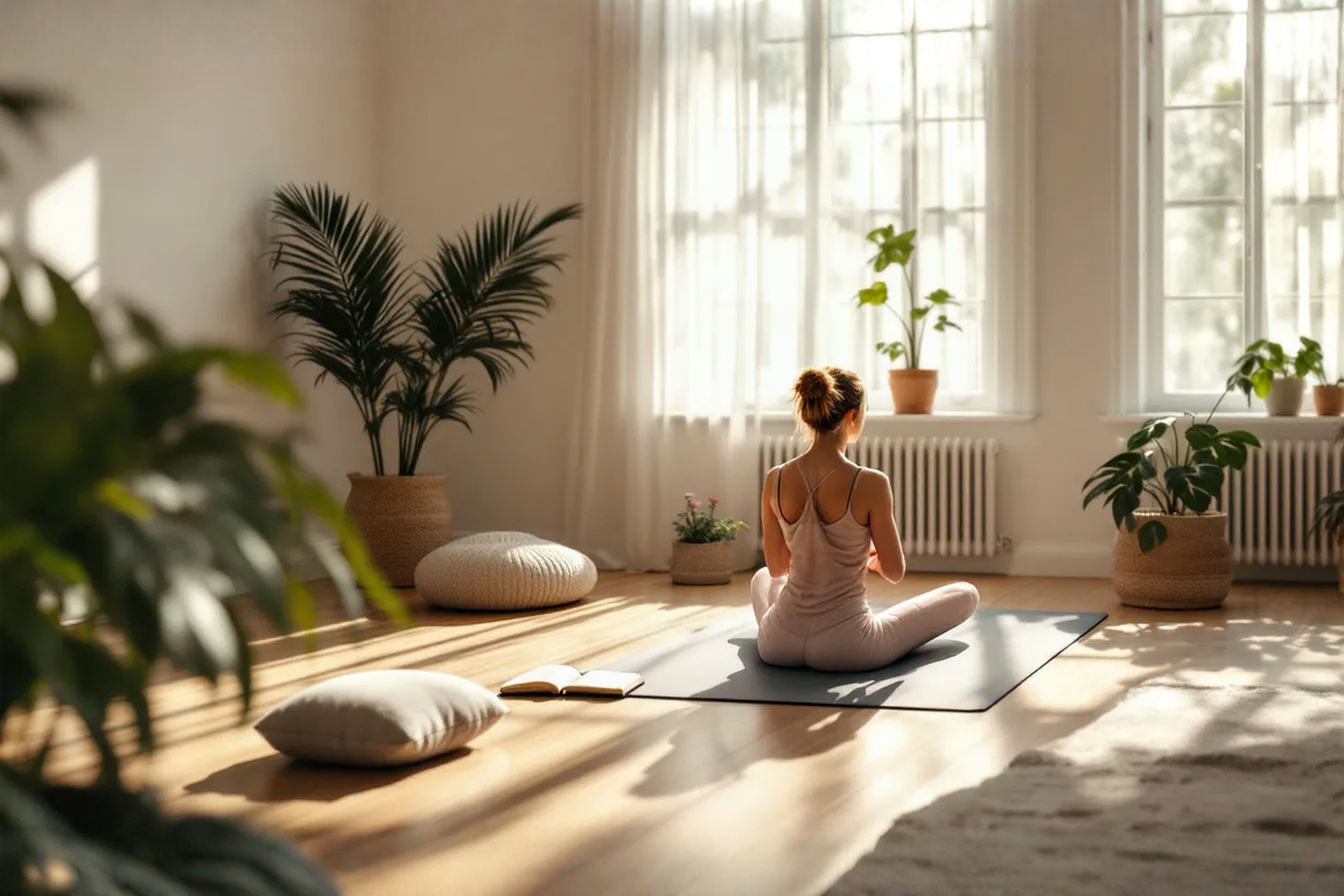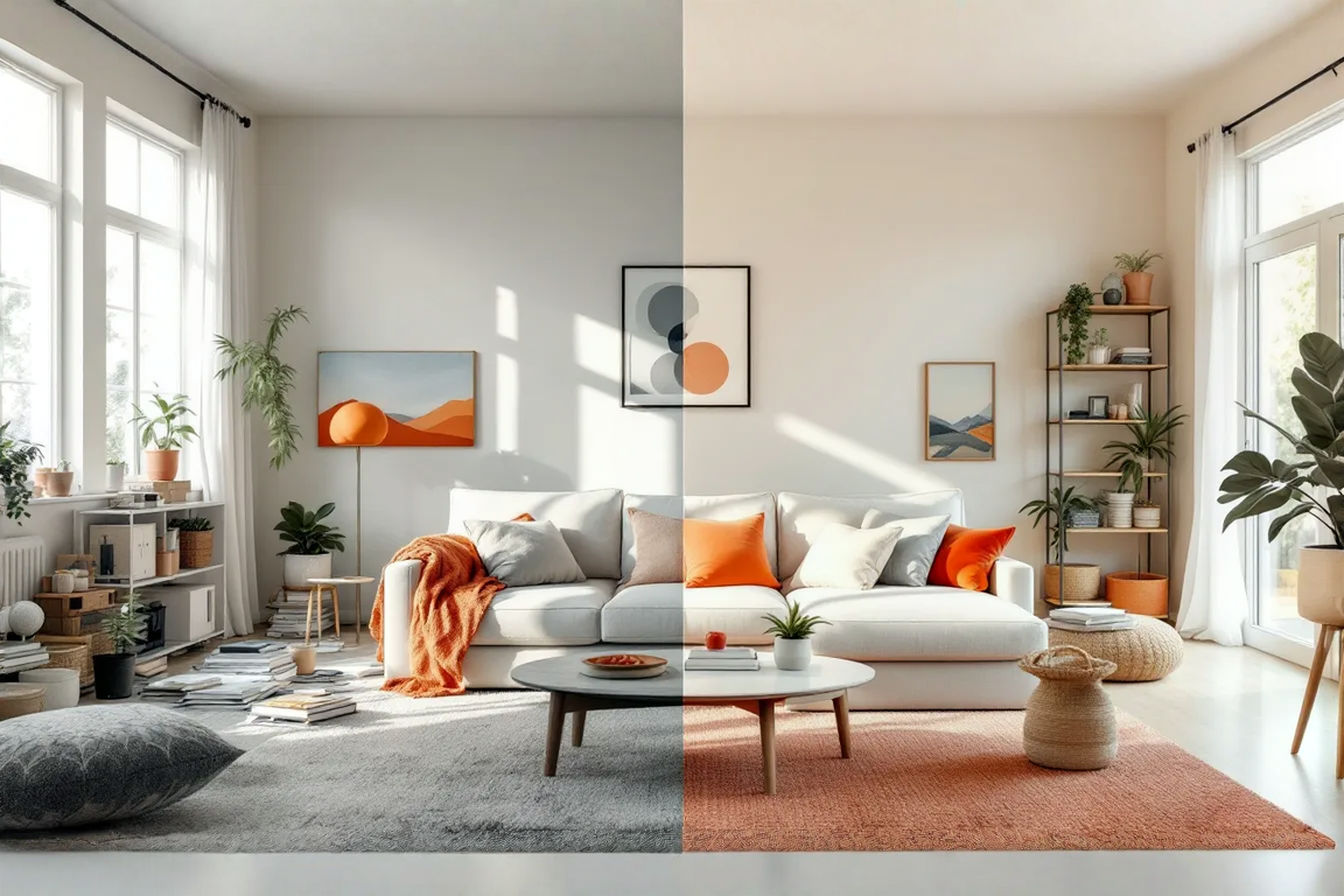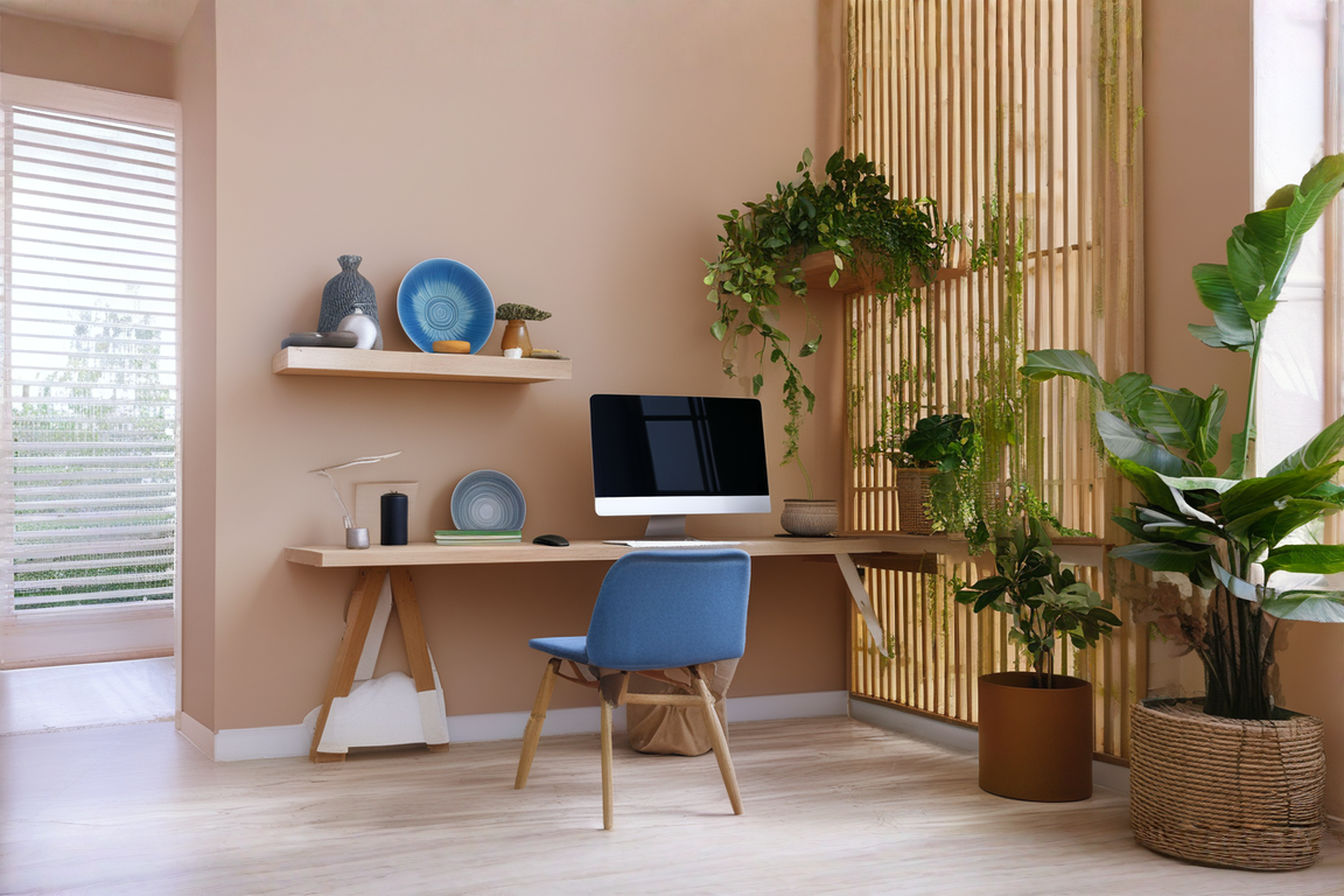This post may contain affiliate links. If you make a purchase through these links, we may earn a commission at no additional cost to you.
The rooms you live in shape the thoughts in your head more than you might realize. Scientists have discovered that your brain constantly processes environmental cues, affecting everything from your stress levels to your creativity. This connection works both ways – your mindset influences how you maintain your space, and your space reinforces your mental patterns daily.
Think about how you feel walking into a cluttered room versus a tidy one. Most people experience an immediate sense of calm in organized spaces and heightened stress in chaotic ones. This reaction isn’t just preference; it’s your brain responding to visual information that suggests either order or disorder in your world.
Studies from Princeton University found that physical clutter competes for your attention, reducing your ability to focus and process information. Each visible item in your space requires mental energy, even if you’re not consciously thinking about it. This explains why many people report clearer thinking after decluttering their workspace.
The colors surrounding you also impact your psychological state. Blue tones can promote focus and productivity, while warmer colors like orange might stimulate conversation and social connection. Natural elements – plants, wood, natural light – have been shown to reduce stress hormones and improve overall well-being.
Your living space often reflects your internal priorities. Someone who values knowledge might naturally create reading nooks, while someone prioritizing social connections might arrange furniture to facilitate conversation. These arrangements then reinforce these values daily through use.
Understanding this two-way relationship gives you powerful leverage for personal growth. By intentionally modifying your environment, you can support new thought patterns and behaviors. Similarly, as you develop new mindsets, your natural inclinations for organizing your space will evolve.
This connection explains why meaningful personal development often requires addressing both internal thought patterns and external surroundings simultaneously. When aligned, they create a powerful feedback loop of positive reinforcement.
Assessing Your Current State
Before making changes, you need an honest snapshot of where you stand now. This assessment creates the foundation for meaningful transformation by identifying both the physical realities of your living space and your current mindset patterns.
Start by walking through your home with fresh eyes, as if visiting for the first time. Note your immediate emotional responses to each room without judgment. Do certain areas make you feel energized while others drain you? These reactions provide valuable clues about the alignment between your space and your needs.
For your living space assessment, document these key elements:
- Clutter inventory: Identify areas where items accumulate without clear purpose. This isn’t about tidiness alone but about whether objects serve your current life or hold you in past patterns.
- Functional zones: Evaluate whether your space supports your daily activities efficiently. A home office tucked in a high-traffic area might explain your difficulty focusing.
- Sensory elements: Consider lighting (natural and artificial), sounds, textures, and scents. These sensory inputs dramatically impact your mood and energy levels throughout the day.
- Personal reflection points: Note places that either inspire reflection or create avoidance. The reading nook you never use might represent an abandoned personal goal.
For your mindset assessment, reflect on these patterns:
- Emotional triggers: Identify which spaces consistently elicit negative or positive emotions. The anxiety you feel when entering your cluttered garage reflects an internal resistance worth exploring.
- Decision fatigue: Notice where you repeatedly face the same disorganization challenges, depleting your mental energy for more important decisions.
- Values alignment: Consider whether your current space reflects what you truly value or past priorities that no longer serve you.
- Growth opportunities: Identify one space that, if transformed, would most significantly impact your daily mindset and productivity.
This dual assessment reveals the connection points between your internal and external environments, creating a clear starting point for intentional transformation.
Setting SMART Goals for Your Living Space
Transforming your living space requires more than vague intentions—it demands well-structured goals that connect your environment to your personal development journey. SMART goals provide the perfect framework for this transformation.
Start by identifying the spaces that most impact your daily life and mindset. For most people, these include areas where you begin and end your day (bedroom), rejuvenate (bathroom), nourish yourself (kitchen), and work or create (home office). Prioritize these high-impact zones for your initial goals.
When crafting your SMART goals for living spaces, consider these elements:
Specific: Define exactly what will change in each space. Instead of “make my bedroom more peaceful,” try “remove all digital devices, reduce visible items by 50%, and add natural elements like plants and wooden textures.”
Measurable: Include concrete metrics to track progress. For example, “reduce visible items from 32 to no more than 15” or “increase natural light by adding one mirror and replacing heavy curtains with light-filtering blinds.”
Achievable: Set goals within your current resources and constraints. If you’re in a rental with limited modification options, focus on furniture arrangement, textiles, and decorative elements rather than structural changes.
Relevant: Connect each spatial goal to a specific mindset shift or habit you want to develop. For instance, “Create a dedicated morning routine space to support my goal of mindful beginnings” aligns your environment with your personal growth objective.
Time-bound: Establish realistic deadlines that create momentum without overwhelming you. Breaking larger transformations into phases often works well: “Phase 1: Clear clutter (1 week), Phase 2: Rearrange furniture (weekend), Phase 3: Add intentional elements (1 week).”
Document your SMART goals visually using photos of the current state alongside sketches or inspiration images of your intended transformation. This visual roadmap makes the abstract concrete and serves as powerful motivation during the process.
Remember that transformation happens in stages. As you achieve your initial SMART goals for key spaces, you’ll naturally develop the skills and motivation to expand to other areas of your home.
Mindset Goals That Complement Space Changes
While transforming your physical environment creates powerful momentum, lasting change requires parallel shifts in your thinking patterns. The most successful transformations pair each space modification with a corresponding mindset goal, creating a harmonious system that reinforces new behaviors from both directions.
Consider these complementary pairings that maximize your transformation:
Decluttering + Decision Confidence: As you remove physical items from your space, set a parallel goal to practice making quicker decisions in daily life. The decluttering process itself builds this “decision muscle” as you evaluate each item. Continue strengthening this mindset by setting small daily challenges like choosing a restaurant within 30 seconds or selecting an outfit in one minute.
Morning Routine Space + Intentional Beginnings: Creating a dedicated area for morning rituals naturally pairs with the mindset goal of starting each day purposefully rather than reactively. As you design your physical morning station, simultaneously develop a simple mental framework for how you’ll approach each day’s beginning—perhaps three deep breaths and setting one priority before checking any devices.
Workspace Organization + Deep Focus Practice: While reorganizing your desk or office to minimize distractions, establish a complementary mindset goal to practice focused work sessions. The Pomodoro Technique (25 minutes of focused work followed by a 5-minute break) works particularly well alongside a newly optimized workspace.
Evening Retreat + Gratitude Practice: Transforming your bedroom into a calming sanctuary pairs perfectly with developing an evening gratitude practice. The physical cues of your serene space trigger the mental shift toward appreciation and reflection.
Entryway Redesign + Transition Mindfulness: As you optimize your home’s entrance to support smooth arrivals and departures, develop the mindset practice of consciously transitioning between outside activities and home life. A simple three-breath pause before entering or leaving reinforces the power of your redesigned threshold space.
When documenting these paired goals, create visual reminders that connect the physical changes with the mindset shifts. Small cards with prompts placed in the relevant spaces can bridge the gap between environment and thought patterns, especially in the early stages of habit formation.
Remember that these mindset shifts typically require more consistent practice than one-time physical changes. Build in regular check-ins to assess how well your environmental modifications are supporting your mental growth objectives.
Implementation Strategies
Even the best-designed goals fail without effective implementation strategies. Transforming your living space and mindset requires a systematic approach that builds momentum while preventing overwhelm. The three-stage implementation process provides a reliable framework for lasting change.
Stage 1: Begin with Focus Start your transformation journey by targeting one high-impact area rather than attempting whole-home changes. Most people find success beginning with either their morning space (bedroom/bathroom) or primary work area.
For this initial space, follow these steps:
- Clear before organizing: Remove everything possible from the space, creating a blank canvas.
- Document the “before” state with photos to maintain motivation when progress feels slow.
- Schedule short, consistent work sessions (15-20 minutes daily) rather than exhausting marathons.
- Start the corresponding mindset practice immediately, even before the physical space is complete.
- Introduce only what truly belongs, using your SMART goals as a filter for what returns to the space.
Stage 2: Build Systems and Connections Once your first space-mindset pair shows success, expand to connected areas that support similar activities or goals. This creates functional zones throughout your home.
During this stage:
- Establish simple maintenance routines for completed spaces while working on new areas.
- Add sensory elements (sounds, scents, textures) that reinforce your desired mindset states.
- Create visual cues connecting physical spaces to mindset practices, like small reminder cards.
- Review and refine your SMART goals based on what you’ve learned from initial transformations.
- Document systems that work for you in a dedicated notebook or digital file for future reference.
Stage 3: Sustain and Evolve The final stage focuses on maintaining your transformed spaces while allowing them to evolve with your changing needs and growth.
Key sustainability strategies include:
- Schedule quarterly “reset” sessions for each transformed area (often aligned with seasons).
- Establish one-in-one-out policies for possessions to prevent gradual accumulation.
- Share your transformation with others, as teaching reinforces your own systems.
- Create space in your schedule and home for continued learning and exploration.
- Practice self-compassion when maintenance temporarily slips, using these moments as information rather than failure.
Throughout all stages, remember that transformation is iterative. Each cycle through these strategies deepens your understanding of how your environment and mindset interact, creating increasingly natural and supportive systems that require less conscious effort to maintain.
Conclusion: The Holistic Transformation Journey
The journey of transforming your living space and mindset represents far more than aesthetic improvements or temporary motivation. When you align your physical environment with your personal development goals, you create a powerful ecosystem that naturally sustains growth long after the initial excitement fades.
Throughout this article, we’ve explored how your surroundings and thought patterns exist in a continuous feedback loop. Your environment shapes your thinking, which influences your actions, which in turn reshape your environment. By intentionally intervening in this cycle through SMART goals for both your spaces and mindset, you gain leverage over the entire system.
The most profound transformations emerge when you recognize that your living space isn’t merely a collection of rooms but an external reflection of your internal priorities. Each organizational decision, each object you choose to keep or release, each functional zone you create tells a story about what matters to you. As you clarify these priorities through thoughtful space design, your daily decisions naturally align with your deeper values.
Similarly, your mindset isn’t simply positive thinking but a cultivated set of thought patterns that either support or hinder your development. By pairing specific mindset practices with environmental changes, you create physical reminders that continuously reinforce new ways of thinking until they become automatic.
Remember that transformation isn’t a destination but an ongoing process. Your needs will evolve, your priorities will shift, and your spaces should adapt accordingly. The implementation strategies outlined here provide a flexible framework that can be applied repeatedly as you grow, ensuring your environment continues to reflect and support your current aspirations.
As you begin your own transformation journey, start small but think holistically. A single well-designed morning routine space paired with an intentional mindset practice can create ripple effects throughout your day. From there, allow your transformation to unfold naturally, expanding to new areas as you build confidence and clarity.
Your living space and mindset are powerful tools for personal growth when aligned with purpose. By harnessing their connection, you create not just a more beautiful home but a more intentional life.



